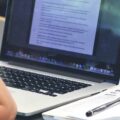Do you imagine that each student could enjoy a personalized experience during their learning? What will they receive the content they need according to their skills and abilities? All this is possible with learning analytics.
What is learning analytics?
Learning analytics is the set of tools used to analyse the data provided by the students themselves, thanks to which we can adapt the experience of each student in each of their courses, so that the experience is more dynamic and efficient, adapted to the individual needs of your students. It consists of the development of methods to obtain and analyse data from our educational ecosystem.
How do I apply it to my courses?
Learning analytics generally deals with data obtained in virtual training proposals such as the number of accesses, revised materials, participations or scores. Data mining is an important part of learning analysis, obtaining data that facilitates research and analysis, and also includes the application of data derived from student behaviour in a course to improve our processes.
It can also consider data on particular habits and behaviours of a single student. Although data mining generally works with large amounts of data and does not particularise, learning analysis encompasses many different types of actions.
How does learning analytics contribute to distance learning?
As we have already explained, learning analytics is the technology that makes it possible to personalise and monitor each of our students’ learning stages, based on specific and understandable data, such as the student’s attendance time, the ratio of correct/incorrect questions, the number of comments in class, etc. This data is available at any time and can be analysed later by an expert or by the teachers, who can apply specific measures to improve the experience of each student.
This technology allows the student’s learning curve to be more optimised and enjoyable, as well as making the teacher’s tasks more efficient, allowing them to observe which methods used in class have the best results.
How to use metrics to improve your courses?
Thanks to the analysis of the learning process, we achieve a saving in time and money and the student feels more integrated in the course and perceives that he has used his learning time in the best possible way. Learning analytics can be used both in hybrid learning systems and in physical institutions, thanks to the democratization of open source digital tools.
Traditional methods are not forgotten in learning analytics processes, class work is essential and irreplaceable, and it will also give us essential information to improve our teaching process, complementing the data obtained at a distance. The teacher can identify doubts of the students in situ, observe the time the students stay in class or the time they need to finish an activity, and this will be complemented with the data obtained in the analytics.
For example, if we stipulate that the students must finish a task in about 30 minutes, and at the end of the period of time they have not managed to finish even half of it, while other students have been able to finish it in 20 minutes, we can analyse the specific case and identify doubts and difficulties that are weighing down the student’s experience.
How can we apply learning analytics to the design of our educational activities?
Firstly, we need to identify the learner’s profile: What is their context? What previous knowledge do they have?
From this initial situation we will take advantage of the learning analytics to examine the information about the students’ performance, extracting and analysing data to define which are the best means and methods to optimise the learning curve of our students, thanks to previous references about the level of difficulty of the students and instructors.
Of course, it is a cycle that never ends with the collection and analysis of data, the longer we use learning analytics the more data we will obtain from students, and the more evidence that it works or does not work on different profiles. The observation of the data obtained will guide us towards a more optimised course, which will improve our educational work, thanks to the experience gained in previous practices, which will improve our work in the future.





